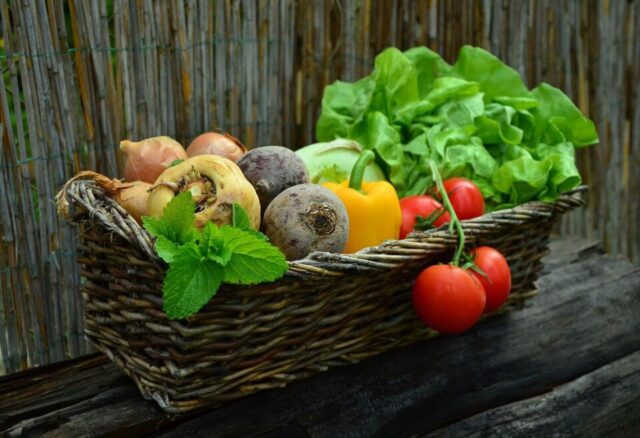GREY MUTTER: There may be another option open to households with budgets stretched almost to their limit. It may be difficult to get it going, and the start-up may be hard and a bit of a learning curve, but have you considered growing your own veggies? asks Lance Fredericks.
ANOTHER excruciating and crippling petrol price hike is upon us. Wait, did I see that right? Can it be true that as of just a few days ago we have been paying an extra R1.27 per litre? So a full tank of petrol will once again swallow up quite a few extra rands off our monthly budget.
I used to boast to my friends that calculating my fuel-spend was easy because at the time my car would travel one kilometre for every rand of fuel I used. The sad thing is that my monthly fuel budget has now more than doubled since I bought my little vehicle, which means that – more or less – it costs me around one rand to travel just 500 metres.
And though to some – with bigger budgets – it may not seem like much to pay around R50 more for a tank of fuel, these costs add up for the average man on the street. Already an average household grocery basket has to do without a number of items just so that there’s enough left over for necessities elsewhere.
Recently I read that people driving small hatchbacks, and assuming that they put 30 litres into their car’s tank, will be paying R38 more per refuel than they did in February – to me, that’s staggering!
It’s been a real struggle for everyone over the last few years, let’s be honest. Companies have to juggle their budgets, giving lower than desired raises just so that they can keep the maximum number of employees from the unemployment line. And that’s understandable, but inflation and rising costs either don’t seem to understand this simple formula or don’t care.
Let’s not think about all the items and services that are more expensive now, let’s just agree that it’s becoming harder and harder to make ends meet, and the forecast is looking pretty grim. Maybe it’s time to monetise that hobby – sell those koeksisters, vetkoek and scones if you have to, especially if they’re yummy!
Now, there may be another option open to households with budgets stretched almost to its limit. It may be difficult to get it going, and the start-up may be hard and a bit of a learning curve, but have you considered growing your own veggies?
Think about it, in South Africa there is usually a patch of bare ground in every yard. We do not think about using the soil for growing veggies because the ground may be hard or infertile. But there could be a way of turning this vacant space into a little garden.
An organisation called Tearfund that presents itself with “a faith-based approach to community development, humanitarian response and advocacy” suggests that all you need is a piece of ground about the size of a door.
Here’s how it works: Dig up an area of ground one-metre by two-metres in size, make the hole about knee-deep – either be prepared to sweat or fork out a few bob to pay someone to do the digging for you.
Next, dump some grass cuttings or other organic material, even household veggie peelings, eggshells and some newspaper into the hole. If you can find any animal manure, by all means add it to the mix. When the hole is half-full of organic matter, give it a good soaking and then replace the soil you removed from the hole.
The Tearfund website offers the following handy tips: “Plant rows of vegetable seeds and herbs. Useful plants which will add flavour and vitamins to the household diet include tomatoes, spinach, traditional leafy vegetables, peppers, beans, carrots, onions and all kinds of herbs.
“Try to plant taller plants such as tomatoes and climbing beans in the middle. Cover with a mulch – a thin layer of grass, straw, rice husks or similar – and water well. Household wastewater is ideal if not too soapy.”
A testimony on the organisation’s website says: “Many people have been amazed at how easy it is to produce their own vegetables. One lady in KwaZulu-Natal said she thought she could only grow traditional crops like maize. But now she can grow cabbages, spinach and onions. Her husband is very impressed!”
A friend of mine, who many years ago had a door garden of her own, says that these gardens worked a treat because neighbours would plant different crops and swap veggies every few weeks.
One interesting morsel is that a well-maintained door-sized garden could potentially – and this is just an estimate – produce between 27 and 54 kilograms of vegetables in a season, depending on various factors like soil, the type of vegetables, maintenance just to name a few.
But speaking from personal experience, last year I dropped some gem squash seeds in the backyard and within a relatively short space of time, we had freshly grown, steamed gem squash for lunch every Sunday; we also had to give bags of them away, as the vine just kept producing.
So from someone who is not an enthusiastic gardener who does not have a green thumb, at least allow me to say, in the current economic climate, this door garden may be a pretty decent option to consider. And with it in your backyard, you need not drive anywhere to get your produce.








